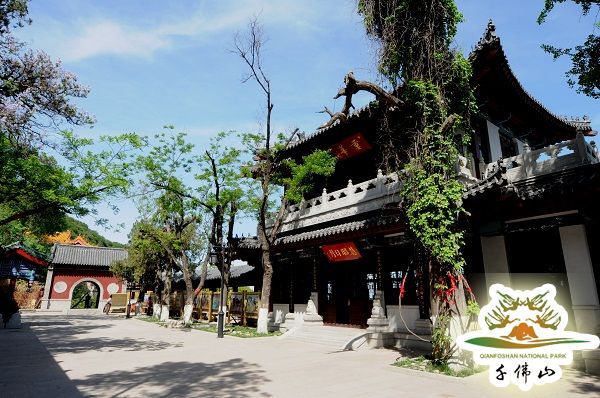
Lishan Yard

Qianfo Mountain was originally known as Lishan Mountain. According to legend, ancient Emperor Shun used to the wasteland at the foot of the mountain. To promote Shun culture, a yard named "Lishan Yard" was built on the mountainside. Located to the east of Xinguo temple, it was also known as East Temple and was originally a yard for Confucianism, Taoism and Buddhism. The three Chinese characters “Li Shan Yuan” on the door is an imperial stele from Emperor Qianlong of the Qing Dynasty. The Lishan Inscription inscribed in the south wall of the yard was composed by Ruan Yuan and inscribed by Gui Fu in the 60th year of Qianlong Period of the Qing Dynasty (1795). They were both scholars in Qianlong Period. Ruan Yuan was good at parallel prose, well-known for his elegant writings. Gui Fu was a famous clerical scripter in Chinese calligraphy history. “Lishan Inscription” is really a script masterpiece. Two prominent scholars combining the writing and calligraphy together is of great value and enhance the charm of Qianfo Mountain.
Influenced by Shun culture, Confucianism, Taoism and Buddhism set foot in this mountain successively. In the fourth year of Chenghua Period in Ming Dynasty (1468), Su Xian, an official of Jinan Dewang Palace , donated to build Sanqing Hall and Zhenwu Hall in order offer his sincerity to Buddhism. During Emperor Kangxi of Qing Dynasty, scholars put a picture of Confucius, founder of Confucianism, in Wenchang Pavilion, accepting the worship of scholars from the world. It is documented that there used to be a Avalokitesvara Hall with a Avalokitesvara statue inside. Therefore, this is a compound yard where three religions—Confucianism, Taoism, Buddhism live harmoniously together. Through ages, now Lishan Yard is a place focus on promoting Shun culture, and the main buildings include Shun Temple, Luban Temple, Three-saint Temple, Pavilion of Panoramic View and other attractions. In recent years, Qianfo Mountain Scenic Area has been vigorously keeping promoting the Shun Culture. In 2009, Lishan yard was rehabilitated based on the preservation of historic monuments. Buildings are repaired, couplets are added to, and a "Shun Code" of 30 meters long, 6 meters wide, with a total of more than 800 words was engraved on the cliff according to the natural mountain, making a more intense atmosphere of Shun culture.
